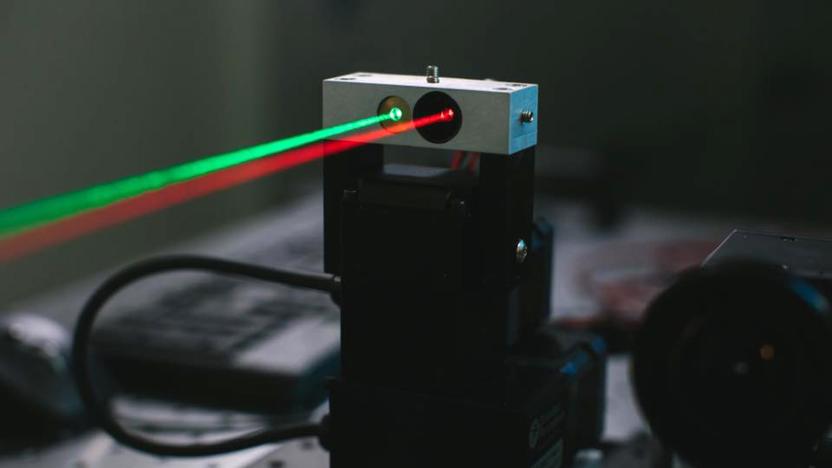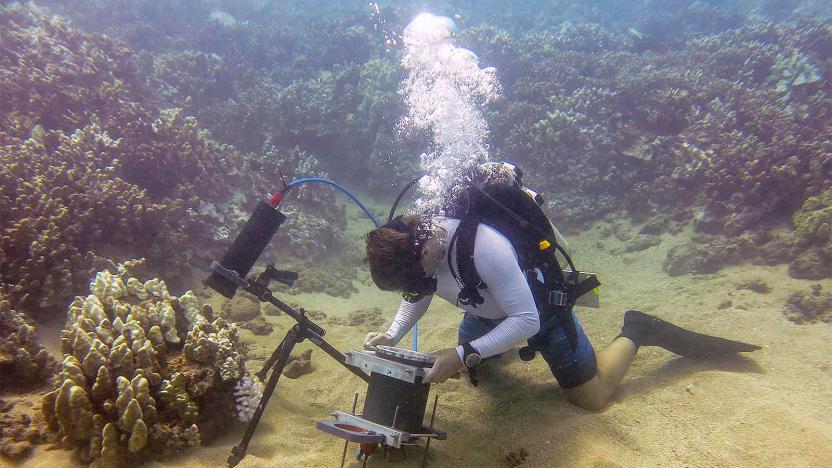fluorescence
Latest

A hidden da Vinci lurks beneath 'The Virgin of the Rocks'
Researchers at the National Gallery of London have used cutting-edge techniques to reveal a hidden drawing beneath Leonardo da Vinci's The Virgin of the Rocks. It shows that the great artist and his assistants, after laying out the original design, elected to take the biblical-themed painting in a completely different direction, to say the least.

Facebook details a way to offer laser-based internet access
Have you wondered how Facebook might offer high-speed internet access using lasers? The company's Connectivity Lab is happy to show you. It just published a research paper explaining laser beam technology can deliver up to 2Gbps to remote places. The trick, it says, is to use fluorescent optical fibers to collect the light instead of relying on traditional optics. Since the fibers don't emit the same color that they're absorbing, you can shine a brighter light at them (similar to a solar concentrator) and manage an extremely quick turnaround time of under 2 nanoseconds. Combine that with multi-stream data encoding and you get the ample bandwidth that's normally reserved for WiFi and wired networks.

Underwater microscope offers a brand new look at sea life
Scientists have a hard time studying microscope sea life, and for good reason. Underwater scientific equipment can't study things at that scale, and bringing samples up to the surface frequently deprives them of that all-important natural context. Enter UC San Diego: its researchers have crafted the Benthic Underwater Microscope, the first undersea microscope that can study "millimeter-scale" activity in its native habitat. It combines a water-friendly computer with an imaging system that revolves around both a high magnification lens and a flexible, tunable lens that can see shapes in 3D. Combined with an LED ring light and fluorescence imaging, the system shouldn't be daunted by most water conditions or unusual specimens.

Scientists implant teeny, tiny lasers into human cells
A few years back, a pair of researchers at Massachusetts General Hospital made human cells glow by impregnating them with a molecule that's normally found in jellyfish called green fluorescent protein (GFP) and packing them into a resonant cavity that amplified the amount of light each cell produced. Now, according to a new study recently published in the journal Nano Letters, a team of scientists from the University of St Andrews have developed a means of making individual glowing cells also act as their own resonant cavities.

This is what brain synapses look like in 3D
Many know that brains are inherently complex things; there are trillions of synapses converting chemical and electrical signals in a human mind. However, did you know that even those synapses are very complex? If not, it should be perfectly clear now. German scientists have used a mix of extremely high-resolution microscopes (both electron and fluorescent), mass spectrometry and protein detection to create a super-detailed 3D map of a synapse in a rat's brain. It's almost like a miniscule city -- those dots you see represent 300,000 proteins, and only a tiny portion (the glowing red patch at the bottom) is transmitting chemicals.

iPhone 5 chemical study shows a green Apple, leaves room for improvement
Eventually, that shiny new iPhone 5 will have to meet its untimely end, whether it's in a landfill or (preferably) a recycling company's machinery. When it does, you'll at least be glad to know that Apple has kept the toxin levels down. HealthyStuff and iFixit have dissected the extra skinny smartphone and put it in the same "low concern" category for potential harm that's normally occupied by phones wearing their green credentials on their sleeves. Lest anyone rush to tell Greenpeace about the feat, just remember that there's a difference between proficiency at excising dangerous chemicals and getting rid of them completely: HealthyStuff still found small traces of bromine, chlorine, lead and mercury in the iPhone 5's construction, which could pose risks if the handset is ever broken apart or melted for scrap. Some concern also exists that the x-ray fluorescence spectrometer doesn't reveal the full extent of any toxic materials. Whether or not these remain sore points for you, the new iPhone is at least easier on the eco-friendly conscience than most of its peers.


